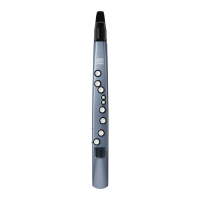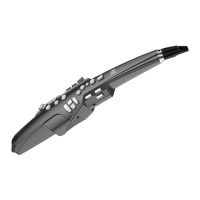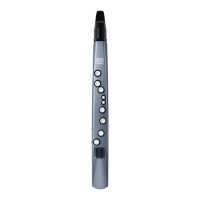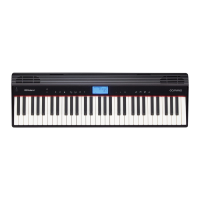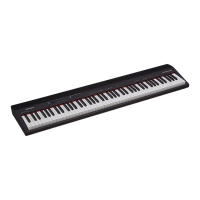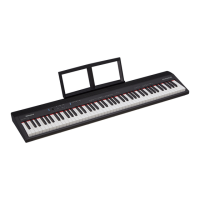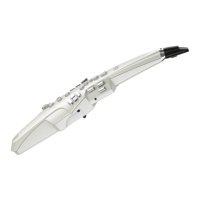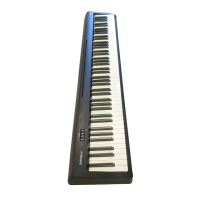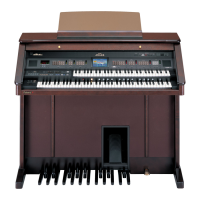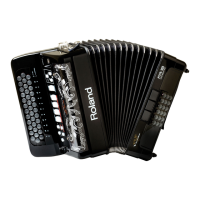8
1. Turn the [
Ā
] switch “OFF”.
2. While holding down both of the octave keys “UP”
and “DOWN”, turn the [
Ā
] switch “ON”.
Once you hear three short beeps, the instrument enters settings
mode.
The power LED blinks when the instrument is in settings mode.
* The side key and octave keys are unavailable while you are
playing in settings mode (or trying to play some notes).
3. Press the side key that corresponds to the item that
you want to set.
A short “beep” is heard according to the current value of the
setting you select (*).
4. Use the octave keys to specify the value of the
setting.
A short “beep” is heard each time you edit the setting (*).
5. Turn the power o, and then on again.
The value that you specify is saved automatically.
The settings are remembered even when the power is switched
o.
* See the “value” column in the table below for the number of times
the instrument beeps.
Changing the Settings
Use these settings to specify how the sound is aected by the force of your breath (Breath Curve), the depth of reverberation (Reverb Level),
the type of ngering (Fingering Type), the bite sensor settings and so forth.
Setting Side keys
Value
(Bold: default)
Explanation
Breath Curve
C3
Species how the sound responds to the force of your breath.
1 L2
We recommend these settings if you’re a beginning
wind instrument player, or if you’re not condent of
your lung capacity. Fortissimo ( ) can be produced
even by blowing relatively softly.
Breath force
Volume
M
H1
H2
L1
L2
2 L1
3 M
This setting is the closest to the response of an actual
wind instrument.
4 H1
We recommend these settings for sax players.
Fortissimo () is produced only when you blow quite
strongly.
5 H2
Reverb Level
TC
1 0
Adjusts the depth of reverb (the reverberation that is characteristic of a performance
in a concert hall).
Higher values produce deeper reverberation; lower values produce shallower
reverberation.
2 1
3 2
4 3
5 4
Fingering Type
Ta
Switches the ngering setting.
Ø For details on ngering, refer to “Fingering Chart” at the end of this manual.
1 Sax Sax ngering
2 Recorder
Recorder ngering
This uses standard recorder ngering, with the pitch range expanded by the table key.
With this ngering, the side keys are disabled so that the note does not change even if
you inadvertently press the left or right side key.
3 E-Wind
Electronic wind instrument ngering
The same “C D E F G A B C” ngering as a standard sax or recorder, with key
combinations that raise/lower the pitch by a semitone.
1, 2, 3, 4, 5, 6, C The same “C D E F G A B C” ngering as a standard sax or recorder
Tc, G´, C´
Raise by a semitone
Ta, Tf, E³, B
Lower by a semitone
B³
Lower by a whole tone
Refer to “Pressing the Performance Keys” (p. 7).
4 Trumpet Right-hand keys 4, 5, and 6 correspond to pistons 1, 2, and 3 of a trumpet.
5 Left Hand Fingering that lets you perform using only the left hand
6 Right Hand Fingering that lets you perform using only the right hand
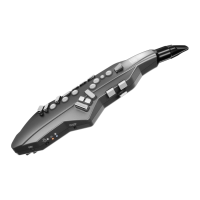
